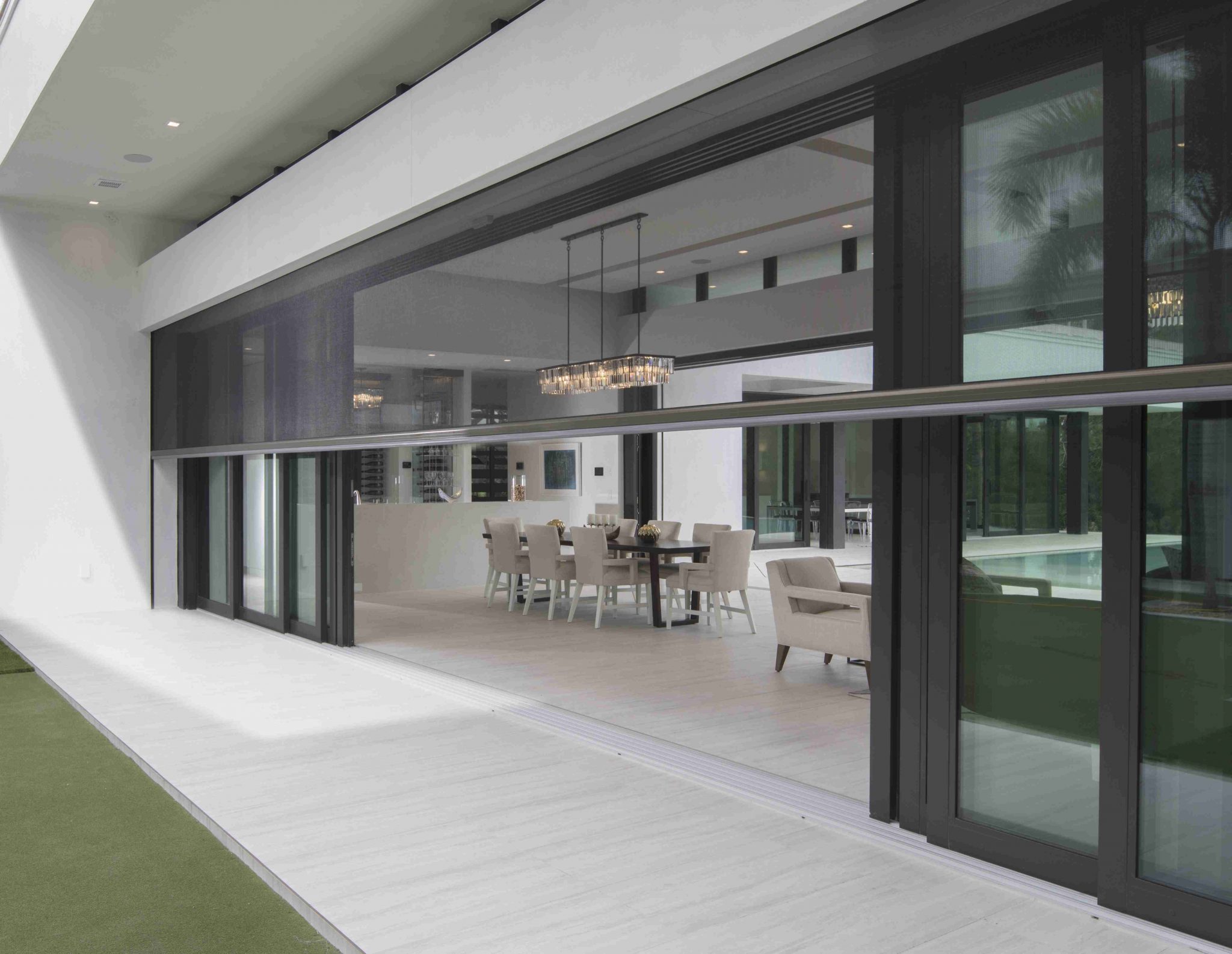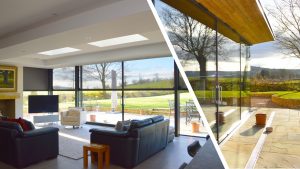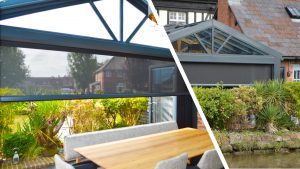
A Change of Scene for Bi-folds and Sliding Doors
In recent years, we’ve seen an explosion in the adoption of glass in architectural design – predominantly for large sliding and bifold doors. We’ve created stunning living spaces and amazing extensions full of light, enhancing the connections we have with our outdoor space. But how about the day-to-day living experience?
More glass of course means more light, and more light means more exposure to the sun and a greater need for solar control. Natural light is a popular design element, but unmanaged, can create an uncomfortable living environment, especially during hot summer months when stunning glass living spaces become greenhouses, or in low winter sunlight when eye-level glare becomes an issue.
Screens are growing in popularity for their performance flexibility and for their aesthetic ‘discretion’. Retractable, recessed screens don’t impact on architectural design; they simply disappear when not in use.
This means homeowners can maximise every inch of available light with no distraction from clean architectural lines. Further subtlety is created by frames that match any RAL colour to blend seamlessly with existing door colour palettes.
Hi-tech mesh fabrics provide a variety of solutions depending on need; from insect control at around 50% openness, to privacy control at around 5% open. Unlike curtains or smart glass, hi-performance mesh fabric provides ventilation which can help manage heat build-up during summer months.
Screen fabrics reduce glare and diffuse the light but retain views to the outside, so you keep the feeling of openness and the connections with exterior landscape. Solar screens block up to 97% of harmful UV rays, so they not only protect your skin, but your furniture, rugs and other furnishings too.
The solar management feature of performance mesh contributes to energy saving by reducing the requirement for HVAC cooling systems in the summer. Building standards dictate that architects and engineers calculate the heating, cooling and lighting performance of a building during the design phase. When included in these calculations, screen fabric can contribute significantly to the building’s overall performance rating.
Different colours achieve different effects too. Dark mesh allows you to see through and focus on the landscape beyond; this is because dark mesh reflects less light and glare. Light colour mesh reflects light back towards you making it harder to see what’s on the other side of the screen; consequently, light mesh is a great outside-in privacy solution.
Visit www.phantom-screens.co.uk for more information.


